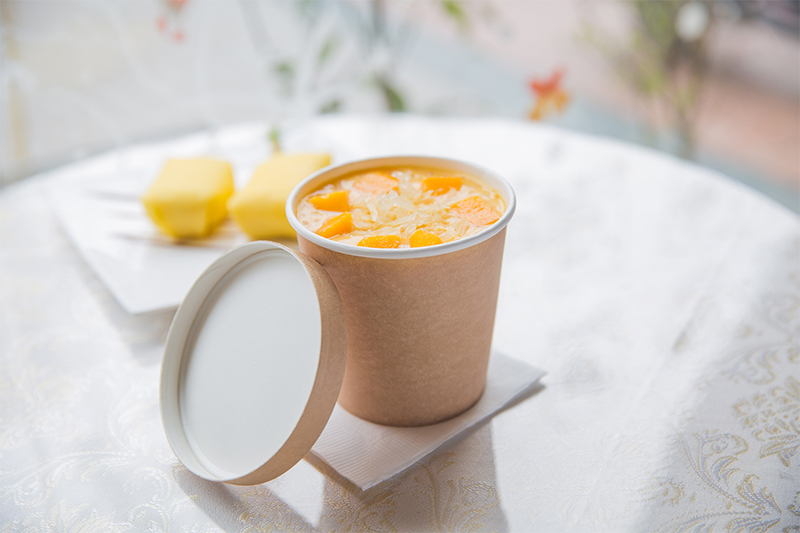
Paper bowls with lids have become a staple in modern food service and home use, offering a convenient way to store, transport, and serve food. Beyond their basic function, these items combine practicality with evolving design elements that cater to diverse needs, from casual meals at home to on-the-go dining.
Design Features for Versatility
The design of paper bowls with lids focuses on functionality. The bowls themselves come in various sizes, from small portions suitable for snacks like nuts or fruit to larger ones that can hold full meals such as salads, soups, or grain bowls. Their walls are typically reinforced with multiple layers of paper, providing sturdiness to prevent tearing, even when holding heavy or moist foods.
Lids are engineered to fit snugly, creating a secure seal that minimizes spills. Many lids feature a slight dome shape, which adds extra space inside the bowl—ideal for avoiding crushing delicate items like greens or pastries. Some designs include a small tab on the lid for easy removal, while others have a recessed top that allows bowls to stack securely, saving space during storage or transportation.
Material Innovations for Food Safety
Manufacturers prioritize food-safe materials in both bowls and lids. The paper used is often coated with a thin layer of plant-based wax or PLA (polylactic acid), a biodegradable polymer derived from renewable resources. This coating creates a moisture barrier, preventing liquids from seeping through the paper and keeping foods fresh for longer periods.
Lids are typically made from the same paper-based materials as the bowls, ensuring compatibility and reducing the use of mixed materials that can complicate recycling. Some lids include a small vent, which helps release steam when the bowl contains hot food, preventing condensation from making the contents soggy.

Adaptability to Various Settings
Paper bowls with lids excel in a range of environments. In food delivery services, they protect meals during transit, keeping soups from spilling and salads from wilting. Their lightweight nature reduces shipping costs compared to heavier containers, making them a practical choice for businesses.
At home, these bowls simplify meal prep and storage. They are perfect for portioning out leftovers, packing lunches for work or school, or serving individual portions at parties. Their disposable nature eliminates the need for washing, saving time on cleanup—especially useful for large gatherings or busy weekdays.
Outdoor settings also benefit from their convenience. Whether for picnics, barbecues, or camping trips, paper bowls with lids are easy to carry and dispose of responsibly. Their sturdy design holds up well on uneven surfaces, and the secure lids prevent insects or debris from contaminating food.
Balancing Convenience and Sustainability
As environmental awareness grows, the sustainability of paper bowls with lids has improved. Many are now made from recycled paper or sourced from sustainably managed forests, reducing their environmental footprint. The biodegradable coatings mean that, when disposed of properly, they break down more quickly than plastic alternatives, though they still require appropriate waste management to avoid litter.
Some manufacturers offer compostable options, which can be broken down in industrial composting facilities, turning into nutrient-rich soil. This provides a more eco-friendly alternative for consumers and businesses looking to reduce their reliance on single-use plastics.
In essence, paper bowls with lids have evolved to meet the demands of modern life, offering a balance of convenience, functionality, and increasing sustainability. Their ability to adapt to different uses makes them an essential item in both daily routines and special occasions.


